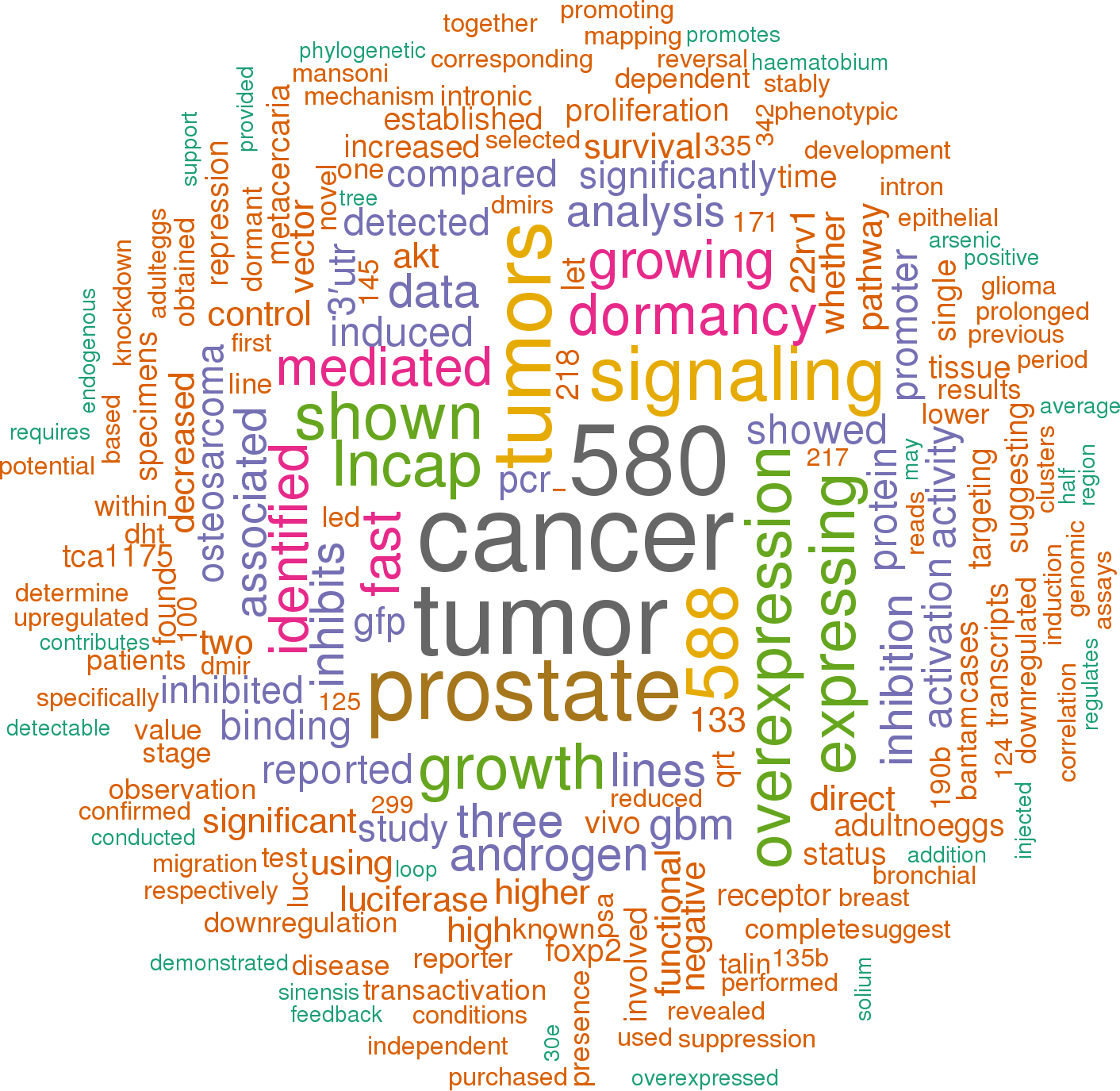Accession
MI0000486
Symbol
HGNC:
MIR190A
Description
Homo sapiens
hsa-mir-190a precursor miRNA
Summary
Caution, this is an AI generated summary based on literature. This may have errors. ?
MIR190A, a microRNA, has been implicated in various biological pathways and diseases, including its significant role in the microbiota-gut-brain (MGB) axis [PMC8615526]. While it is listed among miRNAs that could be responsible for early onset of fibrosis in double-infected transplanted livers, its specific role in the downregulation of miRNAs associated with extracellular matrix remodeling has not been detailed [PMC8869900]. MIR190A has been shown to facilitate bladder cancer (BC) invasion and autophagy by stabilizing ATG7 mRNA through binding to its 3′UTR [PMC8514698], [PMC7226452]. This regulatory effect is further supported by evidence from ectopic expression studies and the use of MIR190A specific antisense in BC cells [PMC6468970]. The overexpression of MIR190A promotes BC invasion and autophagy, while its inhibition leads to increased PHLPP1 protein expression and reduced ATG7 protein expression [PMC6468970]. The upregulation of MIR190A has also been observed in human invasive BCs and is associated with increased ATG7 mRNA stabilization, further linking it to BC invasion both in vitro and in vivo [PMC6468970].
Literature search

43 open access papers mention hsa-mir-190a
(214 sentences)
(214 sentences)
Sequence
8022
reads,
33
reads per million, 94 experiments
ugcaggccucugugUGAUAUGUUUGAUAUAUUAGGUuguuauuuaauccaaCUAUAUAUCAAACAUAUUCCUacagugucuugcc
.(((((.(.(((((.((((((((((((((((..(((((..........)))))))))))))))))))))..))))).).))))).
.(((((.(.(((((.((((((((((((((((..(((((..........)))))))))))))))))))))..))))).).))))).
Structure
u c u -U UA uuau gcagg c cugug GAUAUGUUUGAUAUAU GGUug u ||||| | ||||| |||||||||||||||| ||||| cguuc g gacaU UUAUACAAACUAUAUA UCaac u c u u CC -- cuaa
Annotation confidence
High
Do you think this miRNA is real?
Comments
This miRNA sequence is predicted based on homology to a verified miRNA from mouse [1], later verified in human [2].
Genome context
chr15: 62823957-62824041 [+]
Disease association
hsa-mir-190a is associated with one or more human diseases in the Human microRNA Disease Database
| Disease | Description | Category | PubMed ID |
|---|
Mature hsa-miR-190a-5p
| Accession | MIMAT0000458 |
| Description | Homo sapiens hsa-miR-190a-5p mature miRNA |
| Sequence | 15 - UGAUAUGUUUGAUAUAUUAGGU - 36 |
| Evidence |
experimental
cloned [2], Illumina [3] |
| Database links |



|
| Predicted targets |


|
Mature hsa-miR-190a-3p
| Accession | MIMAT0026482 |
| Description | Homo sapiens hsa-miR-190a-3p mature miRNA |
| Sequence | 52 - CUAUAUAUCAAACAUAUUCCU - 72 |
| Evidence |
experimental
Illumina [3] |
| Database links |



|
| Predicted targets |


|
References
|



